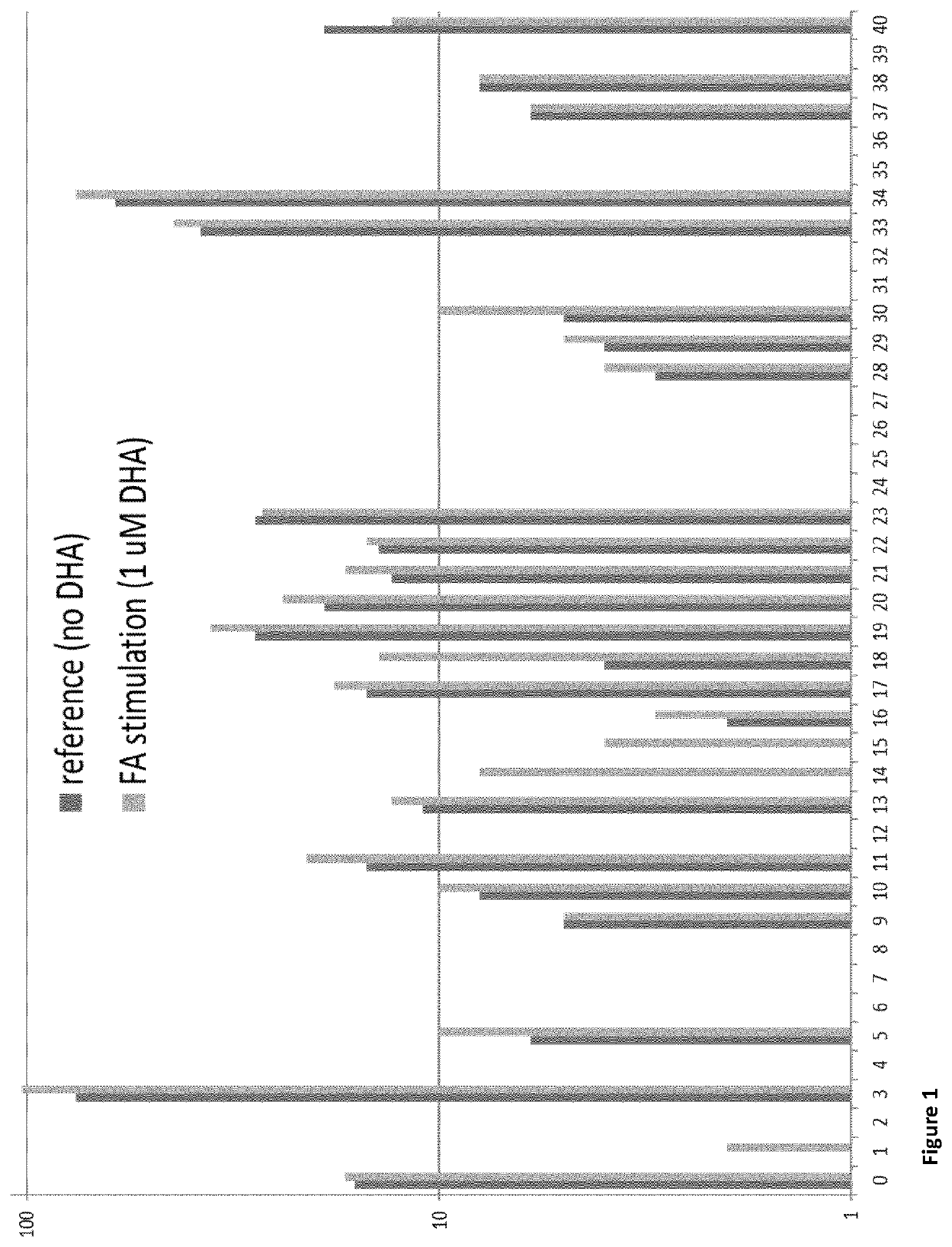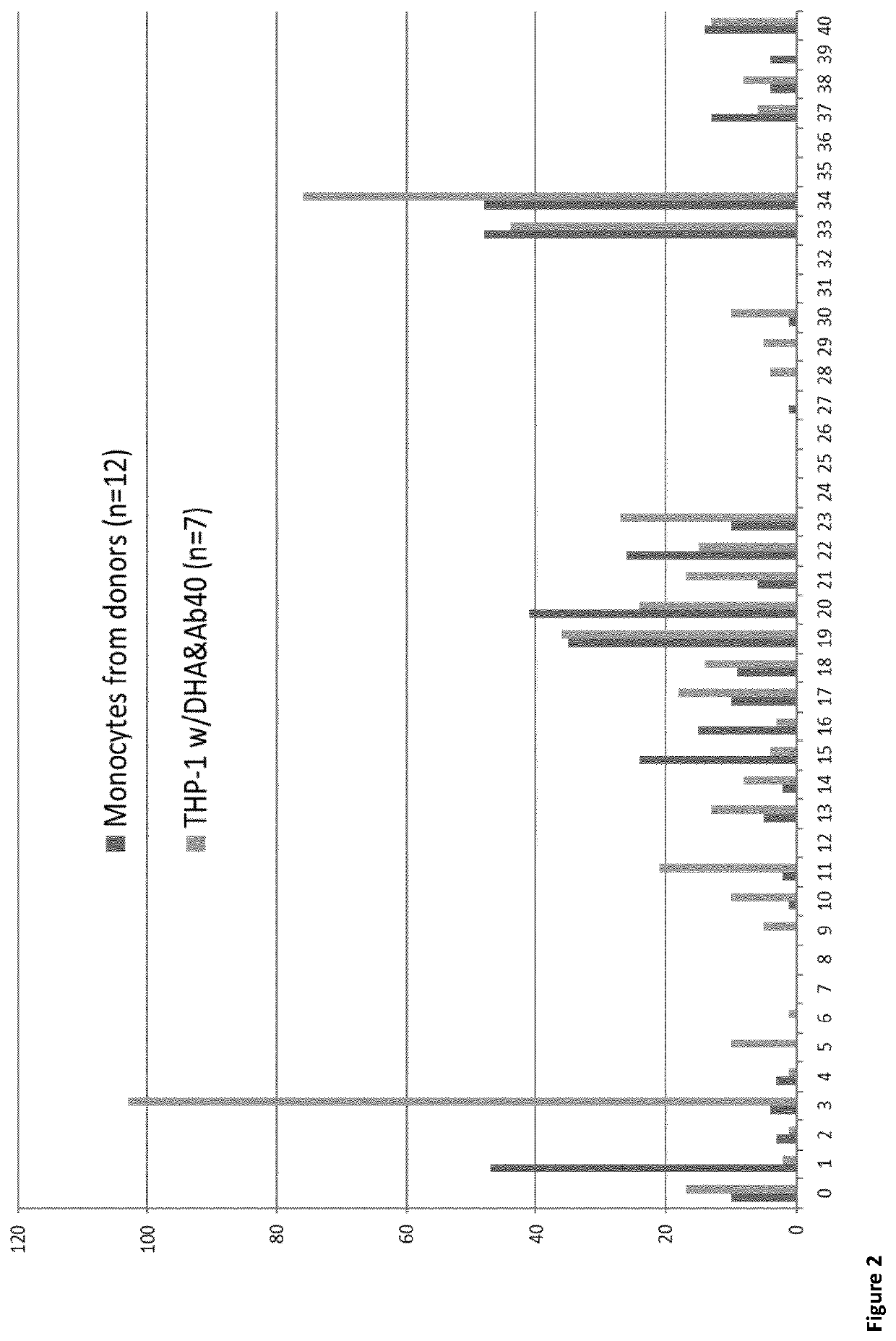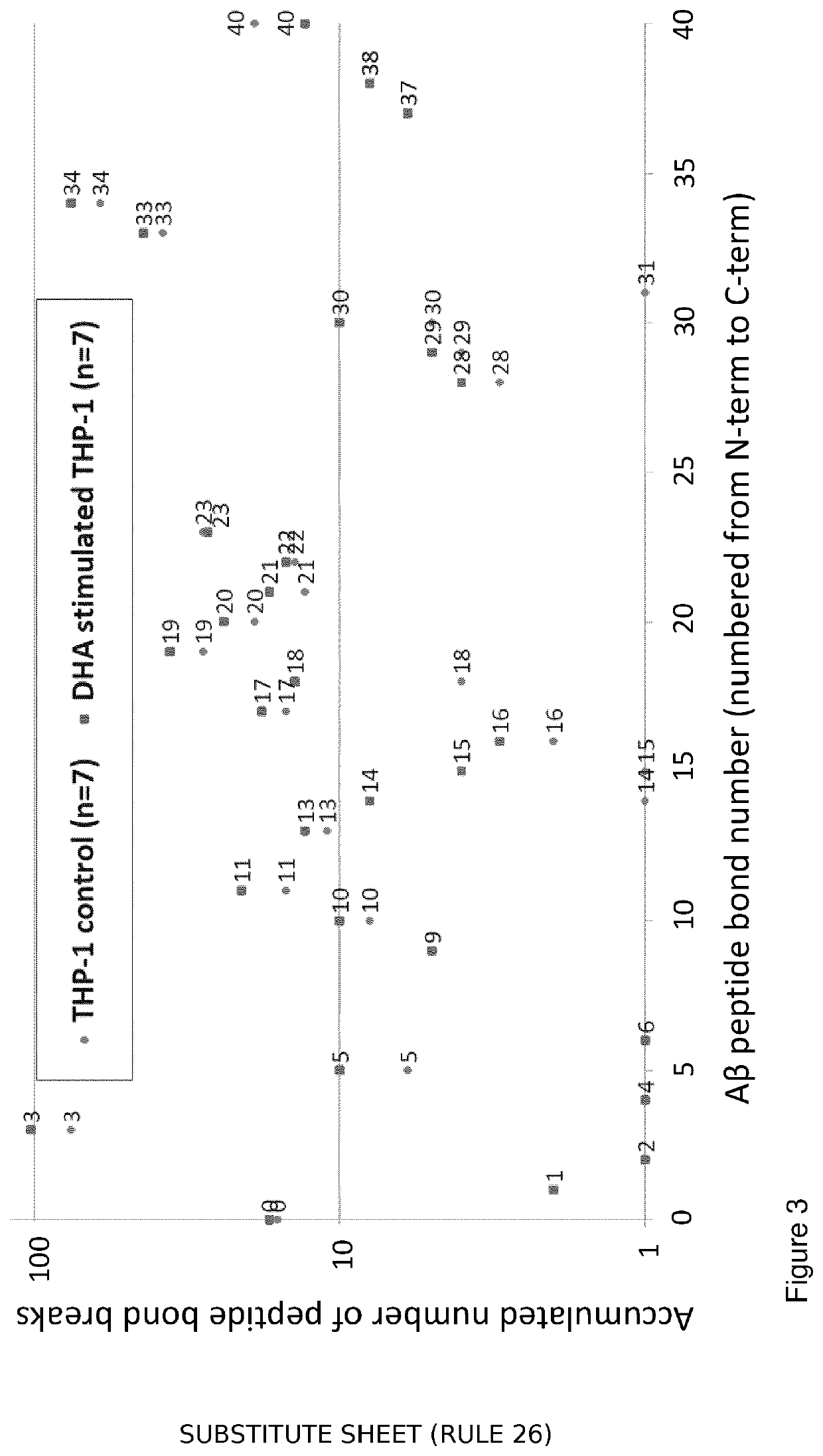Combination therapy
- Summary
- Abstract
- Description
- Claims
- Application Information
AI Technical Summary
Benefits of technology
Problems solved by technology
Method used
Image
Examples
example 1
[0109]Results from the following pilot experiments demonstrate that an Immunoprecipitation Liquid Chromatography Mass Spectrometry (IP LC-MS) approach detects Abeta degradation relevant for monitoring of both disease progression and treatment. The IP LC-MS tool has been used for two sets of samples; a cell model system and on biological fluid from patients and healthy subjects.
[0110]Firstly, a cell model was used to study the effect of the omega-3 fatty acid DHA on degradation of amyloid beta. Here, the THP-1 cells were incubated with and without DHA (1 μM), and subsequently with Abeta (1-40 aa, 10 ng / μL). Secondly, monocyte from healthy controls (NC) and patients with neurodegenerative diseases (AD) were isolated. In both these cases, the cells were lysed and IP LC-MS was performed. The peptide identified from IP LC-MS gave rise to the illustration of Abeta cut patterns shown in FIG. 1 and FIG. 2.
[0111]In FIG. 1, each bar in the graph represents the accumulated cleavage sites on ea...
example 2
[0113]Monocytic THP-1 cells were used as a model system, and IP LC-MS as analytical approach to investigate the effect of DHA on monocytic Abeta-40 processing.
[0114]A THP-1 cell line culture was matured and differentiated, split to be control and stimulated parallels and this was replicated to be performed a total of 7 times (controls n=7; DHA stimulated n=7). Test cells were incubated with DHA overnight, and all samples were incubated with Abeta-40 for 1 to 2 hours. The cells were lysed by freeze-thaw cycles prior to immunoprecipitation performed with two commercial and one in-house antibody. The immunoprecipitate was injected into an LC-MS system. The liquid chromatography was operated in a conventional two column setup with C4 sorbent. The mass spectrometry was operated in conventional ESI+ and DDA mode.
[0115]In the cell lysate, intact Abeta-40 was sparsely detected, whilst Abeta-40 degradation products were widely detected proving both monocytic engulfed and degraded Abeta-40. A...
example 3
[0118]Ex Vivo Monocytes
[0119]Monocytes were isolated from donor blood samples (n=36) with an age range from 24 to 84 years and gender distribution of 1:1. IP and nLCMS were performed to investigate the monocytic Aβ products. The cells were lysed by freeze-thaw cycles prior to immunoprecipitation (IP) performed with two commercial and one in-house antibody.
[0120]The IP eluate was injected to an nLC-MS system. The nLC was operated in a conventional two column setup with C4 sorbent. The MS was operated in conventional ESI+ and DDA mode.
[0121]An accumulated number of 38 endogenous Aβ peptides was identified in monocytes. These peptides predominantly derive from the following pbbs; 13-23, 33-34 and 37-40, as shown in FIG. 2 demonstrating a conserved segment around the mid-domain similar to results from the endolysosomal model(1).
[0122]THP-1 Cells
[0123]Monocytic THP-1 cells were used as a model system and IP and nLCMS as analytical approaches to investigate DHA's effects on monocytic Aβ 1...
PUM
| Property | Measurement | Unit |
|---|---|---|
| Volume | aaaaa | aaaaa |
| Level | aaaaa | aaaaa |
Abstract
Description
Claims
Application Information
 Login to View More
Login to View More - R&D
- Intellectual Property
- Life Sciences
- Materials
- Tech Scout
- Unparalleled Data Quality
- Higher Quality Content
- 60% Fewer Hallucinations
Browse by: Latest US Patents, China's latest patents, Technical Efficacy Thesaurus, Application Domain, Technology Topic, Popular Technical Reports.
© 2025 PatSnap. All rights reserved.Legal|Privacy policy|Modern Slavery Act Transparency Statement|Sitemap|About US| Contact US: help@patsnap.com



